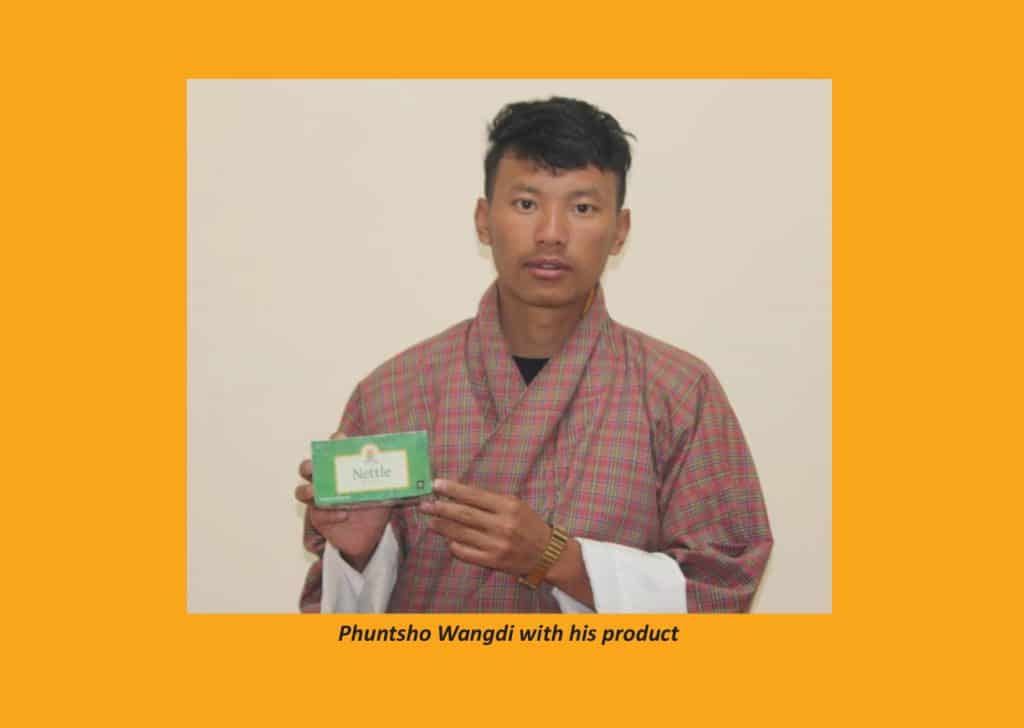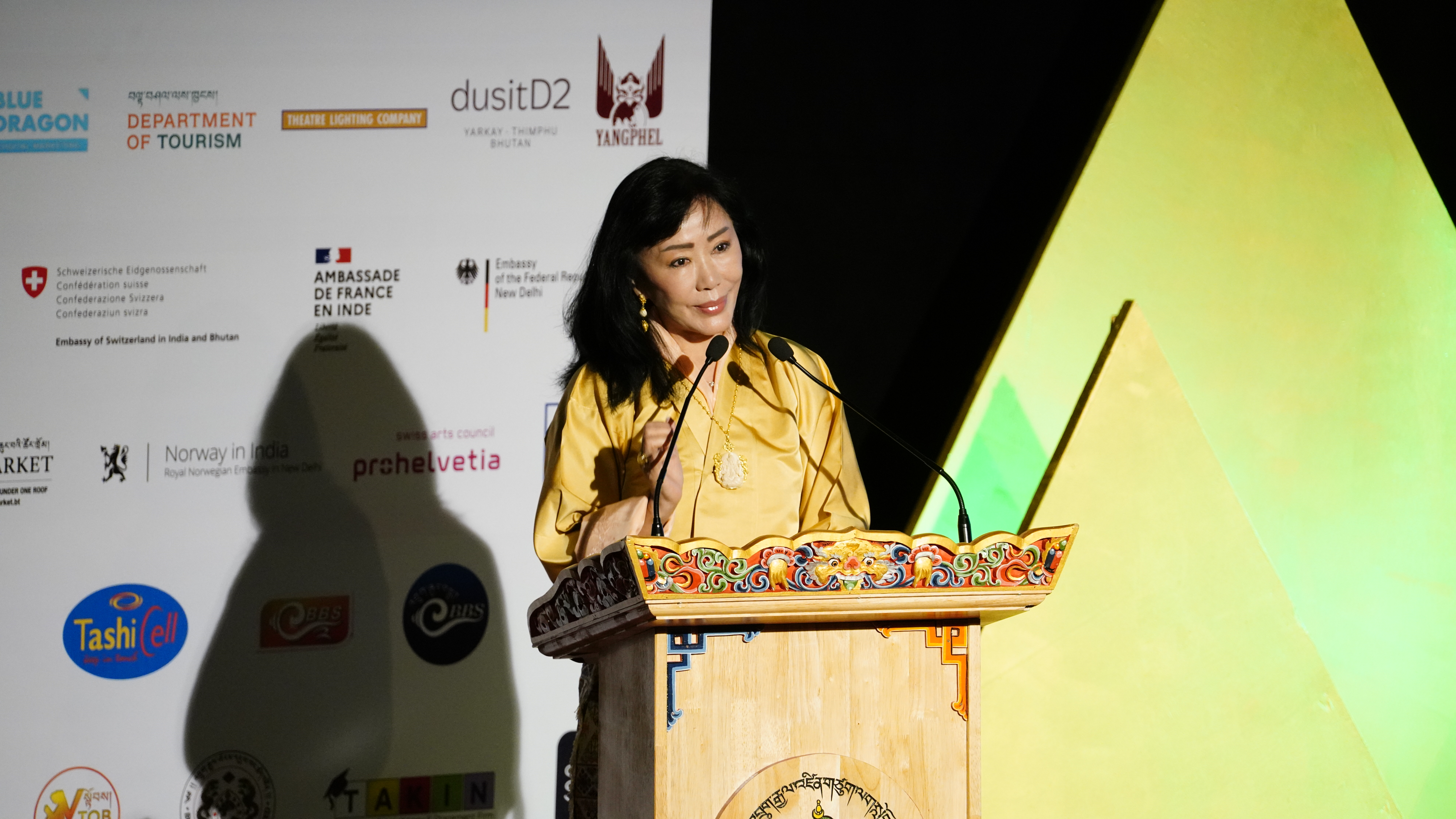Feel the taste of organic nettle lush tea from Gangzur, Lhuntse
It is cold and drizzling at Gangzur, Lhuntse in April. Phuntsho Wangdi, 28 years old and his friends are actively engaged in collecting stinging nettle (Urtica dioica) leaves from the forest near his village. Their bamboo baskets are almost full of stinging nettle leaves.
A moist meadowland is filled with a perennial herb that is 3-7 feet tall, with numerous slender stinging hairs, and saw-toothed with bristle whose tips fall of when touched. Phuntsho Wangdi says it is the best time to collect nettle during the rainy season.
“When foraging for stinging nettles to make stinging nettle tea it is best to pick the leaves before, they flower,” he said, adding that when making stinging nettle tea, go for the leaves that are the youngest and therefore the most tender. This makes spring a great time to start foraging for stinging nettles.
When they reached home, he washes nettle leaves and dries them for almost 3-5 days. But dried nettle leaves are not food for his cows and pigs, these dried leaves are for his lucrative business- “herbal tea made from stinging nettle”.
An entrepreneur, Phuntsho Wangdi, transfers the dried leaves into the grinder and makes its powder. Then the powder is mixed in the ratio with other herbal ingredients -giving a stunning grassy and earthy flavor.
He said that the leaves, stems, or roots from the nettle plant can be crushed and made into powders, tinctures, creams, teas, and more. While people have used it for centuries as herbal medicine, modern research also supports many of the potential health benefits of nettle and nettle tea.
“Stinging nettles have been used by native peoples for a variety of uses throughout history. The plant has a long history of use as a source for traditional medicine,” he said, adding that nettle is a fantastic natural herb that had been neglected for nearly a century in Bhutanese history. Steeping dried leaves and drinking tea dates back thousands of years. It’s thought to originate in China, where it was used medicinally.
“Today, people drink tea for many reasons, including its taste, stimulating or calming properties, and health benefits. One popular herbal tea is nettle tea,” Phuntsho said, adding that nettle teaches us that outer looks and quick judgment is mistaken. Nettle reveals to us the process of transformation, in which unpleasant experiences became something treasured and valuable.
“My business was established as a motive for helping people in his village, making the best use of the available resources,” he said, adding that if his business spur, he will plan for exporting to other countries.
However, he also shared that he invested a total of Nu 90,000 in the Startup of his business, which he received from his mother and some amount was borrowed from his sister.
In addition, after he proposed his idea to the Loden foundation, he received an interest-free loan of Nu 159,000. “It had greatly aided me in the improvement of my business,” Phuntsho Wangdi said.
Meanwhile, by early September of this year, Phuntsho Wangdi had launched a TSEYANG (TSE-life, YANG-blessing) nettle herbal tea with the aid of Loden Foundation, marking it the first nettle-based herbal tea in the nation with a single product as of now.
The Department of Cottage and Small Industry (DCSI) also supported him technically, provided with a machine.
His product compromise savory herbal tea made of nettle, most commonly Himalayan nettle (Girardinia diversi-folia) and common nettle (stinging nettle), bay leaves, and curly leaves giving a pleasant unique taste as compared to other herbal tea available in the country.
“As a business, it must sustain, therefore, I am using leaves rather than roots,” he said.
Although gathering raw materials is not a perplexing task, Phuntsho said the main concern is financial. “As business owners, it is our responsibility to meet consumer needs and to protect their safety. It is difficult to produce the desired product without the use of updated machinery, so keeping things simple is challenging.”
Phuntsho shared that the stinging nettle market could focus on expanding its reach in the markets beyond Bhutan to enhance its business of stinging nettle over the forecast period. Consumers these days are looking for a handy packaging solution for any product they buy, hence manufacturers across the globe could focus on offering stinging nettle in convenient packaging formats to enhance a large consumer base.
“The limited knowledge and awareness of medical practitioners along with low penetration of stinging nettle supplements across wider non-urban clusters is limiting the stinging nettle supplement industry to unfold its potential,” he said, adding that consumer purchasing power and per capita healthcare expenditure in these countries are also increasing year on year, thereby creating a pool of potential targets for stinging nettle manufacturers and suppliers.
Talking about his product he shared that so far, he had been receiving positive feedback on his work, with some even claiming that it had helped them recover from body aches, and coughs and even improved their blood pressure.
Today, nettle herbal tea costs Nu 180 per packet. “Without a good market, it is also a problem right now,” he said, adding that only 20 % of his product had been sold as of now.
DCSI is planning to send my product for marketing to five southern districts, “I am optimistic, it will help me in boosting my business,” he said.
Further, he shared that he will improve his herbal tea quality, and currently he is in the process of developing new types of tea with various flavors based on nettle.
He added that when he was a student at Desi High School in 2018, Royal Monetary Authority (RMA) was directed to organize a business plan for a student business idea. That time, he took part in that business program and received a certificate ranked among the top five.
To enhance his organic nettle herbal tea, Phuntsho requests his villagers to help him with production, collection of nettle leaves, packaging, and other manual works in his places.
“It is comfortable and enjoyable to a scene of nettle herbal tea as it brews. Just a few organic tea leaves are needed to release the authentic flavours into the water, ready to bring you on a journey through lush green landscapes, for a little break,” he said.
He shared that nettles are very high in vitamins A & D, particularly the younger leaves. When picking stinging nettles for stinging nettle tea it is best to pick the younger and fresher leaves.
In the evening, Phuntsho and his friends come together and make stinging nettle tea in his village. “You will need about one cup of nettle leaves for every two cups of water. Simply add the nettle leaves to the water and boil. The tea can be made stronger or weaker by adding more, or less, water,” he said, adding that once the water has been simmering for a few minutes strain the mixture into a cup, being sure that no nettles go through the strainer. Once the mixture is prepared it can be drunk straight away.
Nidup Lhamo from Thimphu














